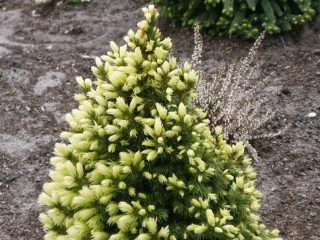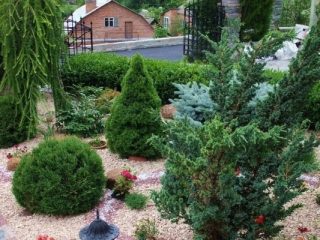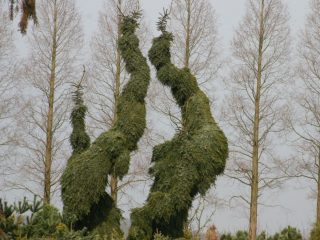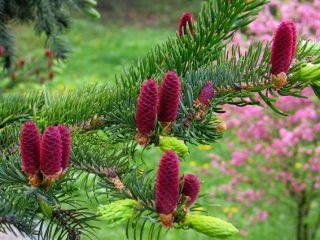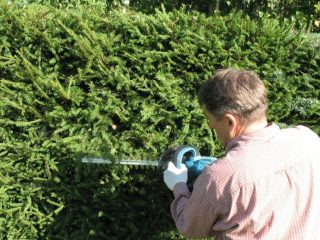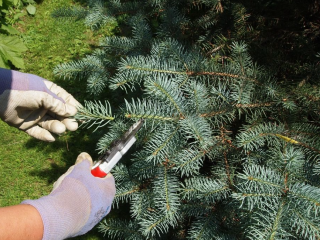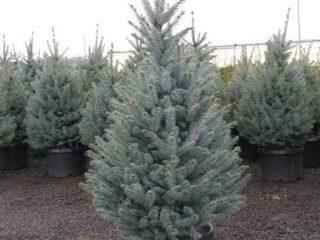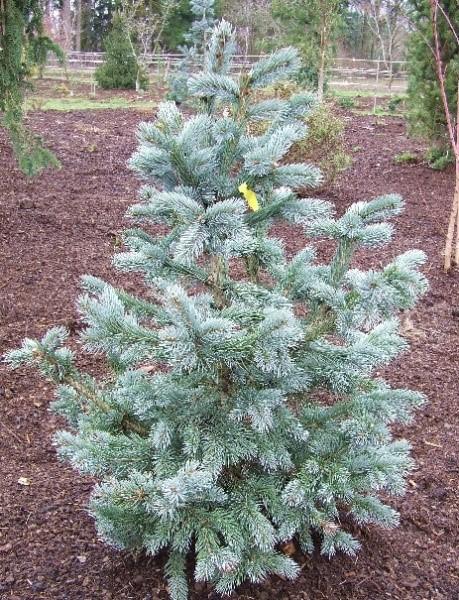Content
Prickly spruce trees grow naturally in the forests of the United States. They can be distinguished by their lush crown, pale blue needles and sharp needles. El Blue Diamond is no exception. The variety is loved by gardeners due to its high frost resistance.
History of origin

The optimal place for planting Blue Diamond is open areas
The culture appeared in the early 90s in a Dutch nursery. There is no information about the founder in the public domain, since the work was carried out by a group of breeders. Spruce is a relative of Glauka, another thorny variety. Artificial selection took place over 15 years.
Scientists did not know whether the plant could take root, so official registration had to be postponed. Blue Diamond received an international patent only in 2005. Two years later, the spruce spread to other countries.
Description of blue spruce Blue Diamond
The variety has a conical crown shape with a pointed upwards. The division into tiers along the branches can be traced. The needles are densely located, which makes the spruce a frequent guest at New Year's holidays.If an adult seedling is placed in water, it will stand without losing its appearance for about two weeks.
Western climate is the most favorable for plant life. The most beautiful specimens are found in Canada. In such conditions, the variety can grow for more than six centuries. Outside the home region, this figure is significantly reduced. For example, in Russia the species lives for about 60 years, that is, 10 times shorter. Against the background of Siberian spruce, Blue Diamond stands out with its noble light blue crown color.
The fruits are elongated and can reach 9 cm in diameter. The culture is unpretentious. Development requires access to the sun; the most lush crowns are formed in open areas. If there is enough ultraviolet radiation, the needles will have the shade of sea water. When planted in the shade, spruce loses its beauty, its crown turns gray and becomes “shaggy.”

Blue Diamond gains beauty over the years
The fruits are not as large as those of other thorny spruce trees, but they grow quickly. Young cones can be distinguished by their size and the greenish tint of their scales. They will fade with age until they turn completely brown. Blue Diamond does not interact well with fruit crops. When planted closely, the roots of larch trees will dominate and grow over the entire area.
Height of Blue Diamond spruce
Spruce is not characterized by rapid growth. In the first years, the height will increase by 1 cm per month. The period of activity begins in the 12th year of life. The crop significantly increases its size, opens its crown, and begins to stretch.
Frost resistance
Blue Diamond has high frost resistance. If we compare it with Siberian varieties, it wins.The culture reacts calmly to temperatures of -40 °C. This allows it to be used for landscaping the territories of the northern regions.
Spruce is planted in large quantities to protect parks from winds. Strong branches also cope with snow. However, this is a light-loving crop; if there is not enough sun, the crop will wither.
Advantages and disadvantages
Blue Diamond has excellent decorative properties, does not require watering, and can withstand drought.
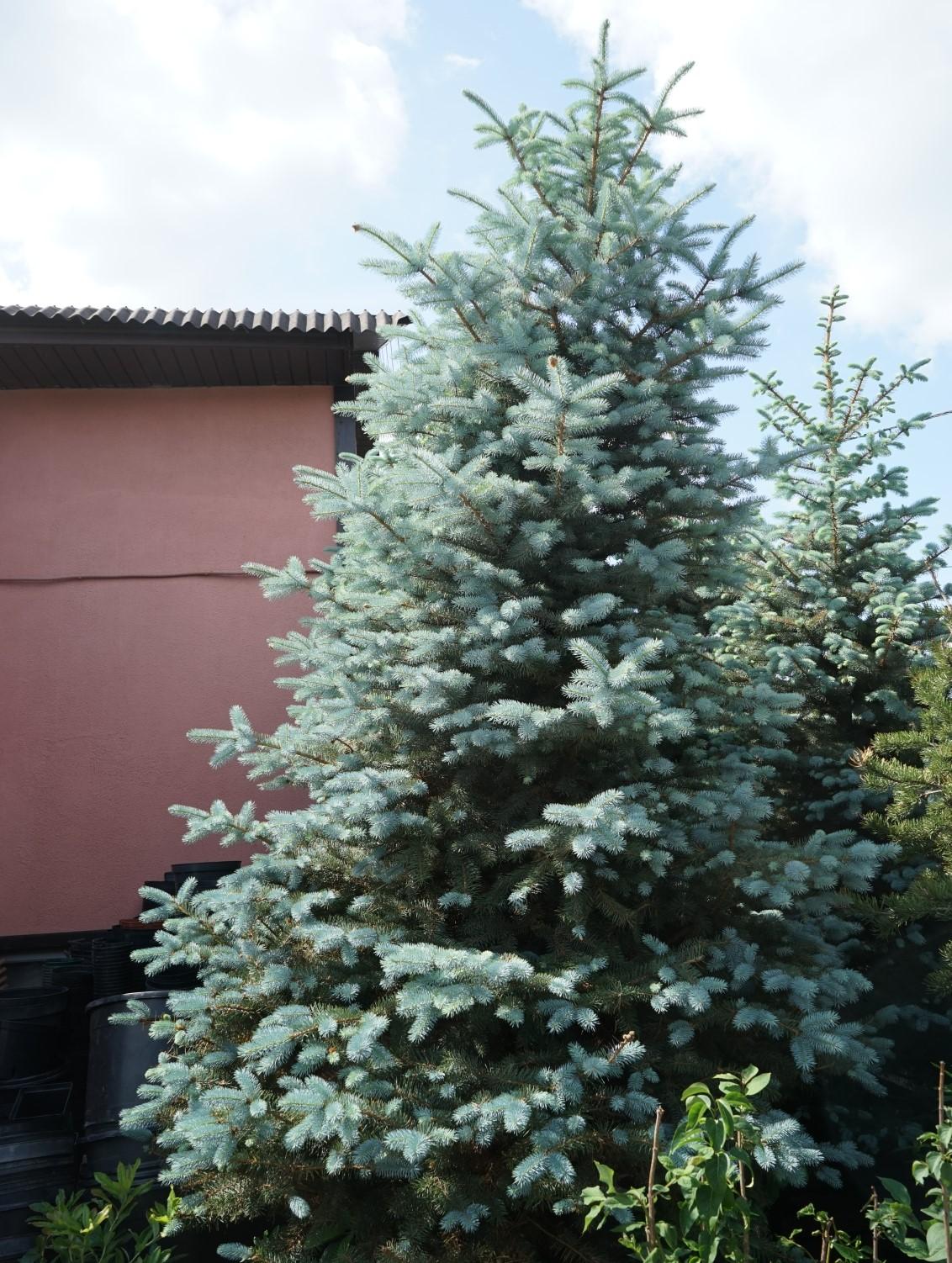
The height of Blue Diamond blue spruce can reach 6 m
Pros:
- has a lush crown;
- gets along well in the northern regions;
- not afraid of frost;
- does not attract pests;
- has high immunity.
Minuses:
- does not grow in too wet soil;
- Constant contact with the sun's rays is required.
Planting Blue Diamond spruce
Blue Diamond prefers moist clay areas and tolerates drought. Without watering, the needles begin to lose color. It does not grow in rocky areas, which is also worth considering. Excess moisture can negatively affect the health of the root system.
Blue Diamond spruce care
The variety does not tolerate industrial gases well. Designers still plant it within the city limits, simply separating it from the relevant enterprises. To grow a beautiful and healthy spruce, you need to maintain a balance between drought and plenty of moisture. Both have a negative impact on development.
Pruning is done once a year in early spring. Only dry areas and upper branches are removed. After this, growth-stimulating additives are added.It is advisable to keep the soil loose so that the root system receives a sufficient amount of oxygen. Digging is done once a month.

If aphids are detected, Blue Diamond must be immediately treated with an insecticide.
Young and fragile seedlings need help to survive the winter. The owner will need to build a reliable shelter so that the wind does not blow it away and damage the branches. Before the onset of cold weather, the soil is mulched.
Reproduction
Blue Diamond can be propagated in the following ways:
- seedlings;
- cuttings;
- seeds.
Growing spruce seedlings occurs much faster, so it is practiced more often. Transplantation is carried out so that the root collar is deepened into the ground at the same distance at which it was in the water.
Propagation by cuttings is carried out at the end of summer. Spruce gives roots in the first two weeks.
Initially, the seeds are placed in water so that they can germinate. Planting on the main site is carried out in mid-spring. Warm and moist soil will promote rapid growth.
Diseases and pests
Spruce is resistant to pests and diseases. Although Blue Diamond has a strong immune system, if treated poorly, the culture weakens. This may be a prerequisite for the occurrence of gray rot. Natural pests are bark beetles and aphids.
Spruce Blue Diamond in landscape design
The variety goes well with most garden crops. In Russia, it is planted along the site to suppress ambient noise.
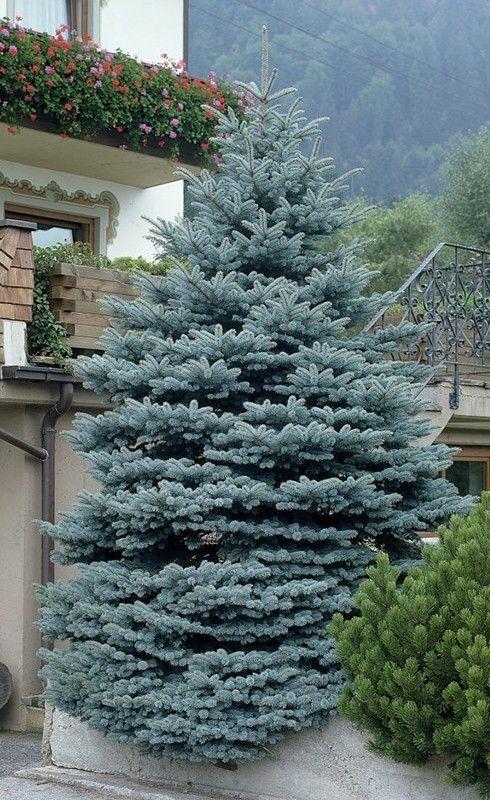
Blue Diamond spruce in combination with other vegetation
Ephedra is used to create an accent (subject to regular pruning) and to form a hedge. To make the crown lush, botanists advise irrigating the needles with water in the evenings.
Conclusion
Blue Diamond spruce is a frost-resistant crop suitable for cultivation in the harsh Russian climate.Due to its decorative properties, the variety is used in the design of parks, dachas, home plots, alleys and New Year's events.
Reviews of Blue Diamond prickly spruce
https://www.youtube.com/watch?v=nSUaU3LLbA8
